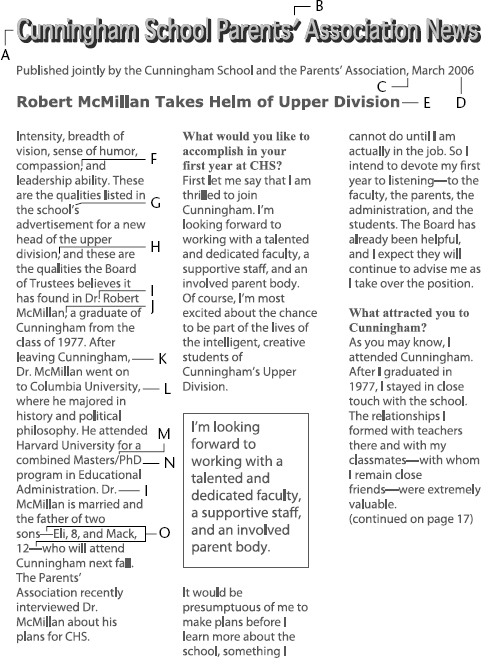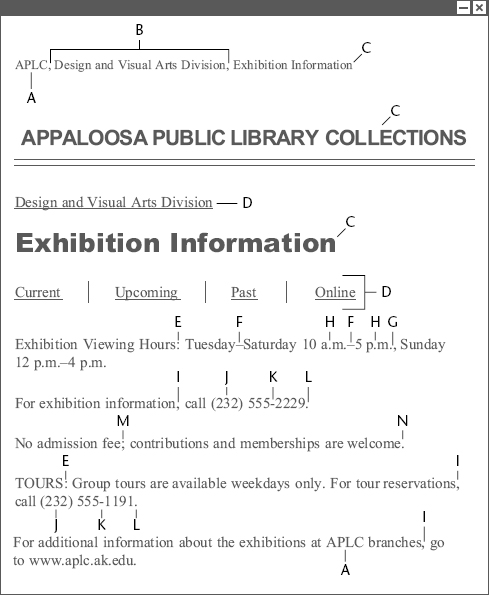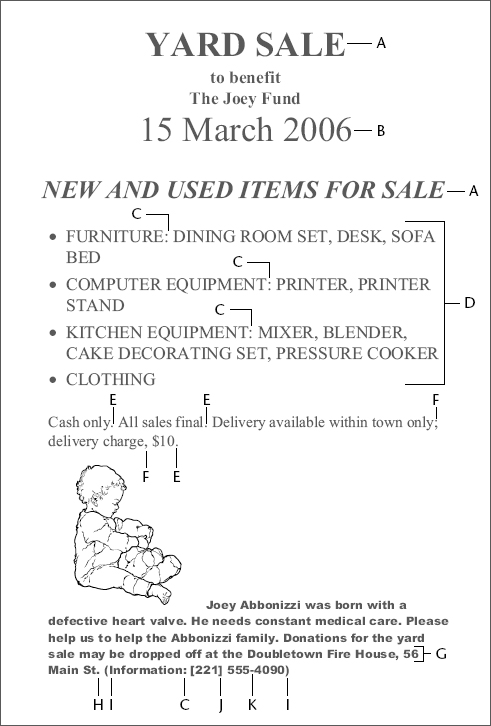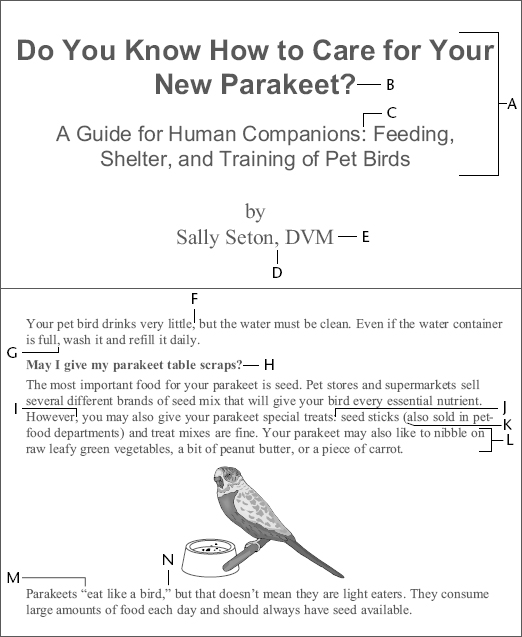Chapter 19
Desktop Publishing
Countless thousands of computer owners have taken their writing directly to the public via desktop publishing programs. Whether on paper or in a website, the advantages of this publishing explosion are obvious. No one can refuse an offer to self-publish, and the number of original voices now in print has increased readers’ options.
However, self-published authors cannot rely on sharp-eyed copy editors to catch stray punctuation marks or to impose consistency and order on writing. Instead, many authors must edit their own creations. This is all the more reason to understand proper punctuation.
Newsletters, Web postings, advertisements, and pamphlets are the most common products of desktop publishing. This chapter contains samples of each form, complete with explanations of the punctuation. Some general principles apply to all these types of writing:
- Headlines and title are not punctuated with quotation marks or underlining, unless the headline refers to another work (a movie or book title, for example).
- Consistency is key. If “afternoon” is abbreviated as p.m. in one spot, it should be p.m. throughout the article, even though PM is also a correct abbreviation.
- Clarity is essential. If a comma or hyphen will make the reader’s life easier, one should be inserted.

Punctuation in a Newsletter Article
A. See this section for an explanation of this point.
B. This organization chooses to make Parents’ possessive. The word parents may also be used simply as a description, in which case the apostrophe is omitted. Follow the wishes of the organization you are describing.
C. The statement about the publication is separated from the date by a comma. The date may be set off in other ways, such as extra spaces or a separate line.
D. No comma separates the month from the year.
E. See this section for an explanation of this point.
F. Items in a series are separated by commas.
G. The apostrophe precedes the letter s in a singular possessive word.
H. When two complete sentences are joined by and, a comma precedes the and.
I. Abbreviations ending in lowercase letters are generally followed by periods.
J. Two equivalent terms—Dr. Robert McMillan and a graduate of Cunningham—are separated by a comma if the second term is extra, not identifying, information.
K. Introductory expressions containing verbs forms (leaving) are followed by commas.
L. The information following the comma (where he majored in history and political philosophy) is extra and therefore is set off by a comma.
M. The slash indicates that one program confers both degrees.
N. The abbreviation for Doctor of Philosophy (PhD) is generally written without a period.
O. The em dashes separate the name/age statements from the rest of the sentence.

Punctuation in a Web Posting
A. Acronyms—abbreviations formed from the first letter of each of several words—do not take periods.
B. In this heading the description (Design and Visual Arts Division) is set off by commas.
C. See this section for an explanation of this point.
D. The underlining indicates a link that may be opened with a double click.
E. A colon separates an introductory expression (Exhibition Viewing Hours, for example) from the details.
F. An en dash traditionally shows a range. A hyphen or the word to may be substituted.
G. A comma separates the two items in this series because they are not joined by and.
H. The abbreviations for morning and afternoon may be written in lowercase with periods or in uppercase without periods.
I. Introductory expressions beginning with for are often followed by commas when they precede a command.
J. The area code in a telephone number is generally enclosed by parentheses.
K. A hyphen separates two parts of a telephone number.
L. A period ends a sentence that gives a command.
M. Although the first part of this expression (No admission fee) is not a complete sentence, a complete sentence is implied (No admission fee is charged). Thus a semicolon links the two sentences.
N. A period completes this sentence.

Punctuation for an Advertisement
A. Centered titles should not be placed inside quotation marks.
B. When a date is written in day-month-year order, no commas are inserted.
C. A colon separates the name of the series from the items in the series.
D. Items in a series are separated by commas. This series does not include the word and. If and appears between the last two items, a comma may or may not precede it.
E. Although many “sentences” in an advertisement are actually not complete in a grammatical sense, most writers punctuate these incomplete expressions with a period anyway if the tone is that of a statement or command.
F. This statement contains two parts (Delivery available within town only and delivery charge, $10). The second part of the statement has an interior comma, so the statements are separated by a semicolon. The semicolon allows the reader to differentiate between statement one and statement two. In this situation, a comma after only would confuse the reader because the list would then appear to have three items (Delivery available within town only, delivery charge, and $10).
G. When an address is inserted into a sentence, commas take the place of line breaks.
H. The period after the abbreviation for street also functions as the endmark of the sentence. Never end a sentence with two periods.
I. Extra information is inserted in parentheses.
J. The area code is usually placed in parentheses. However, in this case the “sentence” is enclosed in parentheses, so the area code is placed in brackets. Another solution is to place a hyphen between the area code and the phone number and omit the parenthesis around the area code.
K. A hyphen separates parts of a telephone number.

Punctuation for a Pamphlet Cover and Interior
A. A centered title should not be enclosed in quotation marks. No period is placed at the end of a title unless one is needed for an abbreviation.
B. Part of this title is a question, so a question mark is appropriate.
C. A colon separates the title from the subtitle.
D. A comma separates a name from the degree; in this case DVM is the abbreviation for “Doctor of Veterinary Medicine.”
E. Abbreviations for college or university degrees are increasingly written without periods.
F. When two complete sentences are linked, a comma precedes the linking word (but in this case).
G. The introductory statement (Even if the water container is full) is separated from the main statement of the sentence by a comma.
H. Questions are followed by question marks.
I. The introductory word however is followed by a comma.
J. A colon may join two complete sentences when the second explains or expands the meaning of the first.
K. Extra information is inserted into the sentence with parentheses.
L. Items in a series are separated by commas. The last comma before the joining word (in this case, or) is optional.
M. The old saying (eat like a bird) is placed in quotation marks to show that the writer knows it is not an original phrase.
N. The comma is placed inside the closing quotation mark, in American English.